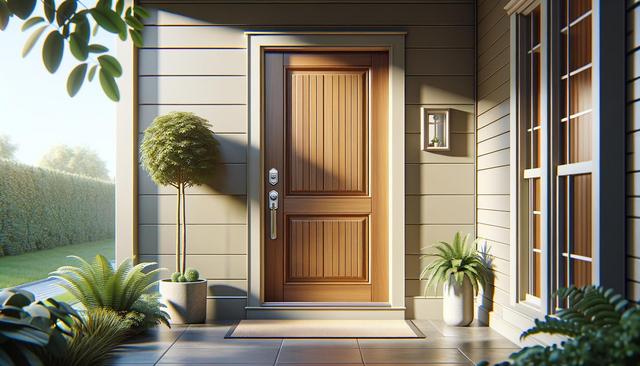What to Know Before Replacing Your Front Door
Replacing your front door can improve both the appearance and energy efficiency of your home.

Why Consider a Front Door Replacement?
There are several reasons homeowners choose to replace their front doors. Over time, doors can wear out, become less secure, or simply go out of style. A new front door can significantly enhance your home’s curb appeal, which is especially important if you’re planning to sell. However, aesthetics aren’t the only factor. Door replacement can also improve insulation and reduce energy costs by eliminating drafts and leaks. If your current door is difficult to open or close, it may also be a sign of structural issues that a replacement could resolve.
Common motivations for front door replacement include:
- Improved home security
- Enhanced thermal insulation
- Better alignment with interior or exterior renovations
- Increased property value
- Lower maintenance requirements
Recognizing when it’s time to upgrade can prevent further damage and improve everyday comfort. If your door shows signs of cracking, warping, or water damage, it’s likely time for a replacement.
Types of Front Doors to Choose From
When selecting a new front door, you’ll find a variety of materials and styles available. Each option has its own benefits, and the right choice depends on your specific needs and preferences. Common materials include wood, steel, fiberglass, and composite blends. Wood doors offer a traditional, timeless look, often chosen for their visual appeal. However, they may require more maintenance than other materials. Steel doors are known for their durability and security, while fiberglass options are praised for their energy efficiency and resistance to wear.
Here are a few popular styles to consider:
- Panel doors – classic design with raised or recessed panels
- Glass-insert doors – allow natural light while maintaining privacy
- Modern flush doors – sleek, minimalist design for contemporary homes
- Double doors – ideal for larger entryways and an elegant aesthetic
In addition to the door itself, consider hardware options like locks, handles, and hinges. These small details contribute to both security and visual appeal.
Understanding the Installation Process
Front door replacement is a project that typically requires professional installation, especially if structural adjustments to the frame are needed. The process begins with an accurate measurement of the existing door and frame to ensure a proper fit. Removing the old door involves detaching hinges, trimming caulk or sealant, and addressing any frame damage. Once the new door is ready for installation, it’s aligned, secured, and sealed to prevent drafts.
Steps typically included in the installation process:
- Measuring the doorway and ordering the right size
- Removing the old door and inspecting the frame
- Making necessary frame adjustments or repairs
- Installing the new door and hardware
- Sealing and finishing touches
While some experienced homeowners may choose DIY installation, hiring a professional can help avoid costly mistakes and ensure long-term performance.
Cost Considerations and Budget Planning
The cost of replacing a front door varies widely depending on the materials, design complexity, and labor involved. A basic steel door installation may be relatively affordable, while custom wood or high-performance doors will cost more. On average, homeowners should expect to spend anywhere from a few hundred to several thousand dollars. In addition to the door itself, you’ll need to budget for labor, hardware, and possible frame modifications.
Factors that influence cost include:
- Material type (wood, fiberglass, steel, etc.)
- Style and design features (glass inserts, paneling, sidelights)
- Level of customization
- Installation complexity
- Location and service provider rates
Planning your budget ahead of time helps avoid surprises. It’s also a good idea to get multiple quotes from reputable contractors to compare options and find the best value for your needs.
Enhancing Security and Energy Efficiency
Modern front doors are designed with both security and efficiency in mind. Upgrading your door can protect against intrusions and reduce heating and cooling costs. Look for doors that include solid cores, reinforced frames, and multi-point locking systems for enhanced protection. Many newer models are also ENERGY STAR certified, meaning they meet specific standards for insulation and thermal performance.
To improve energy efficiency and security, consider these features:
- Weatherstripping and insulated cores to prevent air leaks
- Durable locking mechanisms and deadbolts
- Impact-resistant materials for added strength
- Double or triple-pane glass inserts with low-emissivity coatings
These upgrades not only secure your home but also contribute to long-term savings by maintaining a more stable indoor temperature. When choosing a door, balance style with function to ensure it meets your household’s needs.
Conclusion
Replacing your front door is a practical investment that enhances your home’s appearance, safety, and efficiency. Whether you’re dealing with an outdated design or looking to improve insulation, the right door can make a noticeable difference. By understanding your material options, planning your budget, and considering professional installation, you can ensure a smooth and rewarding upgrade. Thoughtful choices today can lead to long-term satisfaction and lasting value for your home.